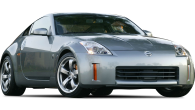The Paseo is one of those cars that get left behind whenever there’s a choice of cars to drive home, but it shouldn’t simply be dismissed as unworthy of a second look. Tucked away below the Celica in the Toyota model range it was easy to miss, or dismiss the Paseo. There wasn’t much wrong with it, it was a well engineered and built small coupe, but it simply lacked character.
It first arrived here in 1991 as an affordable and stylish small coupe positioned below the Celica, but over time its price crept up until it became too expensive for what it was. By 1995, before Toyota unveiled the new model, its price was too close to that of its bigger brother for comfort and sales had slumped.
The 1995 model was Toyota’s attempt to redress the situation. The model range was simplified and the price adjusted downwards to make it more desirable.
Model watch
At first sight the Toyota Paseo introduced late in 1995 seems like a mild makeover of the previous model, but it was much more than that. There was enough change to consider it a new model in its own right.
Let’s be kind from the start, the Paseo might have looked like a sports car, but it didn’t possess enough of the key things that make a sports car stand out to consider it anything other than a stylish small coupe.
There was just one specification available in the simplified model range Toyota released, and that generally fell midway between the base and upmarket versions of the previous model in terms of equipment.
If you took a quick look you could be forgiven for thinking that Toyota had pulled a con with the new Paseo, it looked so much like its predecessor. A longer look would reveal a new car with an aggressive new profile and all-new sheet metal.
There was now longer a grille, the front bumper was revised and incorporated the air intake, the roof line was sleeker forming more of a fastback than the previous model which had a more defined coupe roof line.
Larger rear quarter windows made the interior much lighter, but unfortunately it couldn’t do much to increase the room inside the Paseo, which was cramped. Average sized adults found it very cramped in the rear, with limited legroom and minimal headroom making the experience uncomfortable at best.
If rear seat roominess wasn’t a priority the rest of the Paseo’s interior was quite acceptable. The front seats were new and trimmed in a light grey material, which helped make the interior lighter.
The list of standard features was quite long, with sports instruments, a four-speaker sound system, power mirrors and windows, central locking, cup holders and a tilt adjustable steering column.
Outside it had body coloured bumpers, a neat rear spoiler, rear window wiper and full dress hub caps over steel wheels.
Power was from a 1.5-litre double overhead camshaft fuel-injected four cylinder engine that put out 69 kW at 5400 revs and 136 Nm at 4400 revs. The numbers tell the story, the Paseo is no fireball.
Power delivery was smooth and steady making the Paseo a nice driver rather than a zippy road rager.
Transmission choices were a five-speed manual or a four-speed auto.
On the road the Paseo was competent rather than breathtaking, its handling well balanced and ride comfortable.
Brakes were a combination of disc at the front and drum at the rear, with ABS available as part of the optional Safety Pack which also included a driver’s airbag.
In the shop
The Paseo is generally a reliable little car and little goes wrong with it on a regular basis. Look for a well cared for car, with low mileage if possible, and definitely seek one with a service record.
Check for crash repairs, dropped doors, varying panel gaps, and paint mismatches.
Crunch time
A driver’s airbag was part of optional Safety Pack, which also included ABS brakes. A passenger’s airbag also became available as an option from 1996, and seat belt pretensioners were added as a standard feature from March 1998.
Owner's view
Sybil Coppock’s short stature dictated her car be one that gave her confidence in all driving conditions, but most importantly good vision. After test driving several vehicles she settled on a new 1996 Paseo. It has now done 86,000 km and has met all her expectations for reliability, economy and performance. Her only complaint is the poor design of the boot lock emblem which swivels to allow the key to be inserted and has twice failed, and she says the lack of room in the rear seat would make it cramped for a person of average size.
Look for
• Sleek fastback styling
• cramped interior, particularly in the rear
• renowned Toyota reliability and build quality
• modest performance
• safe handling
The bottom line
Well built attractive small coupe perfect for the beginner driver.
Toyota Paseo 1995: Alpha
| Engine Type | Inline 4, 1.5L |
|---|---|
| Fuel Type | Unleaded Petrol |
| Fuel Efficiency | 8.0L/100km (combined) |
| Seating | 4 |
| Price From | $2,640 - $4,070 |
Range and Specs
| Vehicle | Specs | Price* |
|---|---|---|
| Base | 1.5L, Unleaded Petrol, 4 SPEED AUTOMATIC | $2,640 - $4,070 |
| Base | 1.5L, Unleaded Petrol, 5 SPEED MANUAL | $2,640 - $4,070 |













.jpg)

.jpg)




